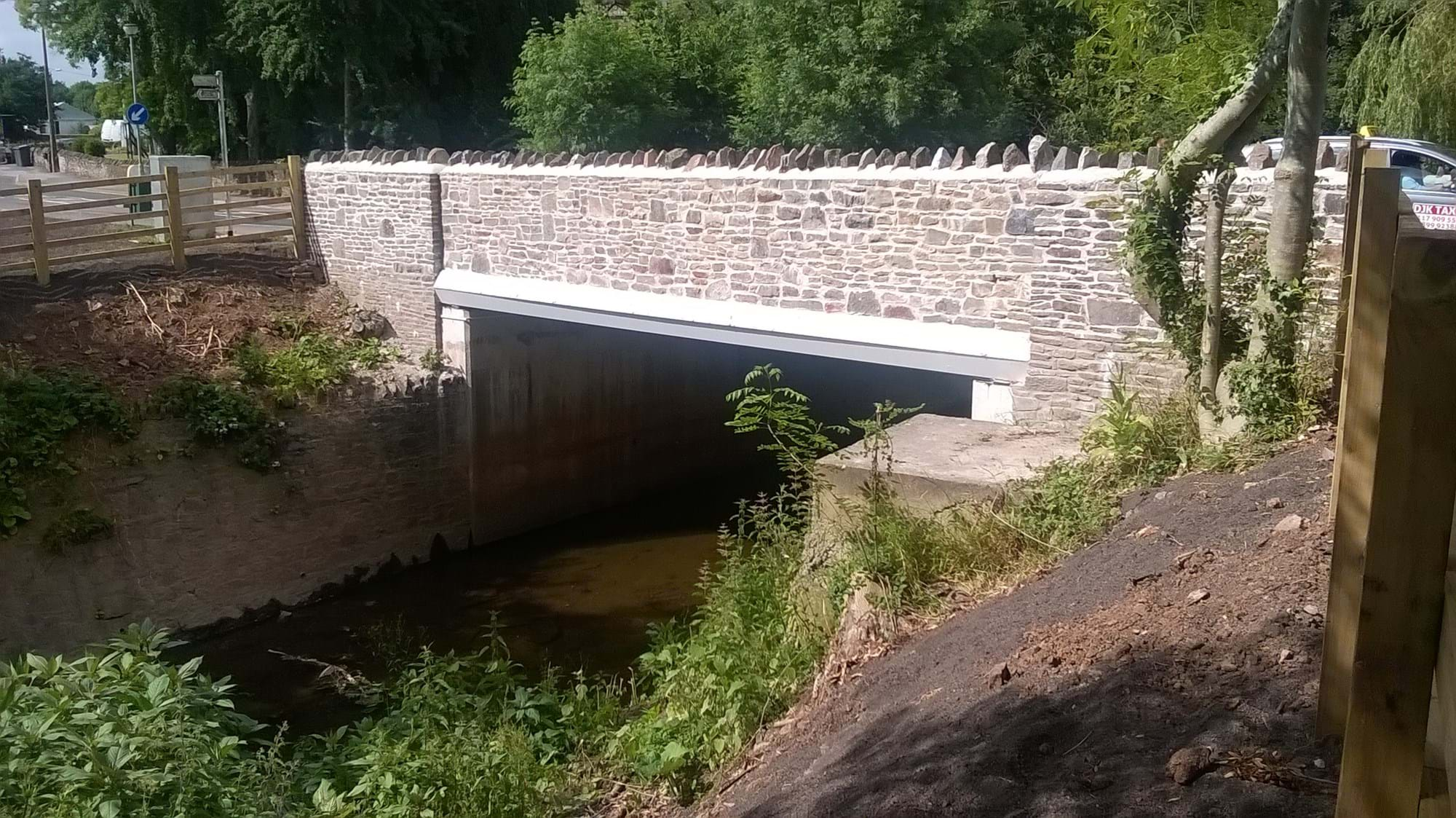

Fiberline Building Profiles A/S
Frampton Cotterell, near Bristol Fiberglass with FBD Bridge deck ASSET. Length: 12,5 m, width: 8.9 m Load: Heavy traffic. Total weight: 46 tons, weight bridge deck: 16 tons
It was the prospect of a corrosion-free, cost-efficient solution and reduced renovation time that convinced South Gloucestershire Council that GFRP composite was the right choice for replacing a life-expired bridge.
The existing steel and concrete bridge over the River Frome in the south-west England village of Frampton Cotterell was so badly damaged by corrosion that replacement was the only option. The new bridge structure and GFRP bridge deck are designed to withstand heavy traffic and the previous 13-ton weight limit has been lifted.
Above all, what makes GFRP ideal for bridges is its strength-to-weight ratio. For example, the new GFRP bridge which carries Church Road across the River Frome is just as strong as similar structures of both steel and concrete, but it weighs much less. This meant that transport from assembly site to installation site was both easier – and greener. In addition, the entire bridge was assembled off-site to facilitate quick and easy installation at the erection site. The final overall construction time was therefore half that for a traditional bridge solution.
The fast on-site installation was particularly attractive to South Gloucestershire Council, not only for saving on construction costs, but also for minimising the disruption to residents and businesses.
Brian Allinson, Chairman of South Gloucestershire Council's Planning & Transport Committee: "When we came to look at options for replacing the redundant road bridge on Church Road we knew that one of the priorities for local people was to minimise the amount of time that the road had to be closed.”
However, by far the weightiest argument in the decision-making process was the minimal future cost of maintenance. The GFRP bridge solution is both weatherproof and non-corrosive, which means that no painting or water protection is required. In addition, no damage is caused by either frost or de-icing salts. The seepage of de-icing salts into the substructure together with meltwater is particularly harmful to steel and concrete bridges.
James Henderson, Senior Consultant with Atkins, the project engineers: ”The most attractive benefit of a composite bridge is that it would cost at least 50 per cent less to maintain than a concrete or steel structure over the course of its life.” Atkinsglobal.com
Although fibreglass as a material is slightly more expensive than traditional materials, the bottom line is totally different when viewed over the whole life of the bridge. Here fibreglass is the most financially advantageous option because savings can be made both on installation time and transport, and above all on future operating and maintenance costs.
When the structural renovation was completed, stone cladding was restored to the masonry, returning the bridge to its original appearance. This means that the GFRP bridge deck can only be glimpsed from the river below. The ASSET bridge deck used was developed in connection with an EU-funded project (West Mill) to promote the use of composites in infrastructure. Read more about the West Mill project here.